|
|
|
09/21/2002 - Discovered a retro computer site
Browsing around the various computer-related newsgroups, I
came across this web
site, dedicated to retroactive computers. It covers many
computers and other electronic gadgets from the 1980's and
before. HOWEVER, one line of computers the site is very weak
on are Apple computers. But don't flame the site just yet...
The webmaster of the site is actively looking for Apple II enthusiasts
to write articles about the beloved 8-bit and 16-bit machines.
If you're interested, contact either Ian
Gledhill or Jorge
Canehas. |
|
And... For you Japanese anime fans, I finally broke
down and purchased the Video Girl Ai statue. It's a 1/6 scale
pre-painted polystone statue of Amano Ai, the cute and
"defective" video girl from the Video Girl series.
Made by KOTOBUKIYA
Co., the statue stands about 12 inches tall, and has very
thin parts to it, which is amazing that this statue came in in
one piece! The detail on this statue is just incredible! Click
on this link to see my gallery of pictures I took
of her.
BTW, I would HIGHLY recommend you watch all six episodes of
Video Girl Ai. If you've never watched Japanese anime before, this
is THE ONE to start off with. I love geeky love stories
where unpopular guys interact with cute girls, which is
actually the theme of most anime. You can find the 2-DVD set
on eBay most of the time. I highly recommend watching the
non-English dubbed version (in other words, don't buy the VHS
version) and listen to the original Japanese dialog, along
with English subtitles. |
|
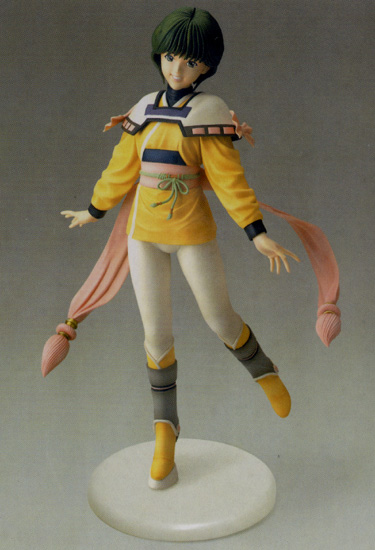 |
|
09/16/2002 - The Death of the Happy Mac After
18 years, the happy compact Macintosh face that appeared on
startup of every Macintosh System software release since 1984,
is now
dead and gone, thanks to Mac OS X 10.2 "Jaguar".
I'm really not surprised about this event. As a matter of
fact, I'm surprised the Happy Mac didn't disappear when Apple
got rid of the rainbow-colored logo or did away with the
Picasso Macintosh logo a few years back. What I do find
surprising, however, is that many of today's Macintosh users
don't even know what a "compact Mac" is! Take a look
at The Mac Geek logo in my banner... You wouldn't believe how
many e-mails I've received from people asking me, "What
exactly are those two smiling peach-colored boxes????"
One person even thought they were toasters... "What does
toasters have to do with computers????"
There are people, besides myself, that do celebrate the
legacy Macintosh models on a regular basis. Take Devan
Simunovich, for example. Until about two years ago, this
guy never own a compact Macintosh. Today, he's up his armpits
in Color Classics, SE/30's and SE's. He's sort of like me...
He loads the Macs into his Honda Civic (how the hell he can
fit a dozen compact Macs into a Honda Civic is beyond my
comprehension), takes them to a rented office facility, then sets
them up into a legacy arcade parlor. I'm about one year
ahead of him on this one. Not only that, I've dug even deeper
than Devan, by exposing the Apple 8-bit machines like the
Apple II+ running Choplifter. If he ever set up an Apple
II-class machine in his arcade, then I'd be VERY impressed! Source
courtesy of Bill Fuller of HMAUS
|
09/13/2002 - Origin of the Smiley Mike Jones
has posted the results of his computer archeology into the origin
of the smiley face:
The smiley :-) and its many variants are an important (and
fun!) part of the worldwide online social culture --
allowing emotions to be conveyed in plain text. It has been
in widespread use since the early '80s, when it was first
proposed. Yet the original message in which the smiley was
invented had been lost -- until now. :-) After a significant
effort to locate it, on September 10, 2002 the original post
made by Scott Fahlman on CMU CS general bboard was retrieved
by Jeff Baird from an October 1982 backup tape of the spice
vax (cmu-750x). (Courtesy of MacInTouch 09/13/2002)
|
|
Also in relation to the history of computing, David
Plotnikoff of the Mercury News (article posted on
SiliconValley.com), gives an overview on the 50th
Anniversary of IBM's first West Coast lab in Silicon Valley.
Probably one of the biggest breakthroughs to come out of the
lab was RAMAC,
the world's
first disk drive that weighed a hefty 1 ton. It's pretty
ironic that they're celebrating RAMAC, even though the disk
drive is only 46 years old. People believe it's because by the
time RAMAC reaches 50 years, IBM will no longer have a hard
disk drive division (IBM should be selling off its hard disk
division to Hitachi by the end of 2002).
|
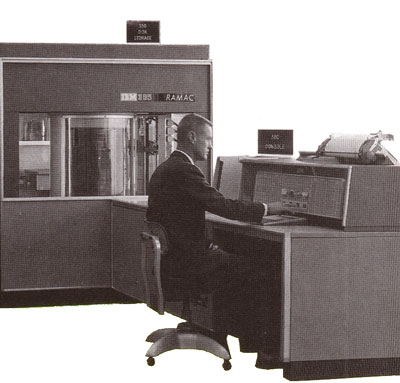
|
|
My Museum has somewhat of a link to the IBM event. I
have in the Museum one of, if not the first 3.5-inch 400KB
disk drive ever made. The Sony mechanism I have was made
around 1981 or 1982, and was made way before the Apple Lisa or
the Macintosh 128K. I'll post photos of the drive and the
micro-diskettes it came with when I get around to it.
Have a happy Friday the 13th! :-)
|
|
09/06/2002 - Download section is up! Yes! I've
finally got off my lazy rear-end and posted the Downloads
section of this web site. And it's going to grow! Right now,
I've included three tools for PC users who have legacy
Macintosh systems but don't have the diskettes to boot them.
|
|
09/04/2002 - Very slow month, let me
tell ya.... Sales of Apple vintage items on eBay seem to be at
an all-time low. I've never seen anything like it! Even sales
to the Japanese are low. I'm right now trying to move
out some surplus items on eBay, however they're not receiving the
amount of activity I was seeing just two months ago.
In Japan, the economy is currently suffering a recession,
so many businesses are suffering or even disappearing. That
may explain the decline in spending on Apple vintage items in
that country. And, depending on your point of view, the United
States is on the verge of suffering through a recession of its
own. Though the events of September 11 was almost one year
ago, it took quite awhile (I'd say at least 10 months) for the
effects of it to reach the vintage auction market. During the
past two months or so, I've seen at least three Apple Lisa 1
machines sold on eBay. I don't know if that's just sheer
coincidence, or maybe this is a sign where we've reached our
limits and it's now time for us to cash in our collections to
help overcome our financial situations. Because eBay sales are down, I've again put a freeze on
purchases for the Museum.
Enough of the depressing stuff... Onward to the
positive! I'm right now brainstorming for a possible monthly
newsletter for Apple Computer collectors. If you're reading
this and have ideas, whether its content, marketing, etc., please
drop me an e-mail. I anticipate the newsletter will be free
for awhile. Then, when it's in full-swing, I may charge a
nominal fee or obtain advertising to help curb the costs. The
newsletter will be fully electronic, possibly either a web
page or an Acrobat PDF. On the comp.sys.apple2 newsgroup,
there seems to be an increase in appreciation for the PDF
format, especially with legacy documentation. It was less than
two years ago when virtually everything in the Apple legacy
world were scanned in GIF format so that all operating system
platforms could enjoy.
What will the newsletter cover? The major categories
I plan on covering are:
- Reconditioning equipment, such as re-lubing 3.5-inch auto-eject disk drives or scrubbing Sharpie pen marks on cases
- Correctly authenticate items to make sure what you have
or plan on buying is the real thing and not a fake
- Apple history
- Coverage on applying yesterday's products to today's
world (ex: using Mac Plus as a DNS server, or using
FlashCards with ProDOS)
- A personal section, which focuses on people throughout
the world who collect Apple products
Sounds interesting? I hope to get a newsletter out by the
end of 2002. Again, if you have any tips, or if you'd like to
participate in this project, please e-mail me!
|
|
08/19/2002 - History of the Apple Computer logo
Jens Hofman Hansen researched the history
of the Apple logo and tells the story in a series
translated into English from Danish by Mogens Thyregod. (Courtesy
of MacInTouch, 08/19/2002)
|
|
09/24/2002 - New Macintosh downloads for PC people
I have posted two new disk images to prolong the life of the legacy
Apple Macintosh systems. The two disk images are for Apple Macintosh
System 6.0.8. If you've come across a legacy Macintosh in need of
system software, download both the
System Additions and
System Startup diskettes.
|

|
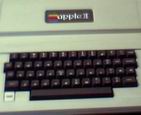
Apple II (circa 1979) with the "newer" style power LED
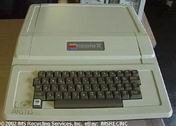
Apple II (circa 1977) with the "older" style power LED
|
|
08/11/2002 - Very VERY overly-bidded Apple II
I'm one of a very few people who believe in Apple Computer
collecting. I also believe that there are times where an item
may sell at a higher price because of its collective value.
What I do not believe in are very, very stupid bidding on
items that are way more than its collectible value, especially
because of the lack of research. The thing
I have a rag over is not just the bidding price, but the
stupidity of the bidder because of the lack of knowledge about
the item he/she is bidding on.
For example, take
the latest bid on an original 1979 Apple II computer.
Because the bid was private (does not show the bidders'
names), I don't know who ended up winning the item. Thank
goodness for that because I would be lecturing that person by
now.
The Apple II is a highly-valued collectible. It was only
the second Apple Computer model that ever came out, the very
rare Apple I being the first. In 1977, Apple released the
Apple II, being the first model to be fully built - case and keyboard
included. If you look closely at the second photo, you'll
see that the power LED (lower left of the keyboard, next to
the spacebar) is about 1/4-inch above the surface of the
case. It actually sticks up just as high as the spacebar.
The keys on the keyboard are glossy, and has a smooth
texture to them. On the logic board, it is dated to show
either 1977 or 1978. The logic board's serial number is
|
|
hadwritten, and is usually a 4-digit number. It has the
"16K" marked memory select chips, and the slots
are colored green. This version is VERY rare, and I would be willing to pay
about $800 or more for it. In 1979,
Apple revised the Apple II line by coming out with the Apple II+, the
model that comes with Applesoft BASIC in ROM. When they made
this model, they also re-designed the keyboard by making the
power LED flush with the case, shown in the first photo. Also in 1979, they revised the logic board, and
therefore changing the date on the logic board to show 1979.
And it is this version of the logic board that changed the
type of slots to a less fragile type, colored black. These
changes also affected the Apple II. In 1982, Apple again re-designed the
keyboard so that the keys had some texture to them, making it less slippery when
typing. The logic board seems to be the same 1979 version.
So, why did this
person bid $800.00 on this particular Apple II? Because
he/she did not do the the homework! The bidder probably
thought this was a very early edition of the Apple II. NOT!
What this person ended up purchasing instead is an Apple II
with an Apple II 1979 revised logic board and newer glossy
keyboard with the flush power LED. This model is still a
collectible, but the value is no more than $400.
What
should the bidder have done is look at the pictures and read
the description a lot closer. The seller said the logic
board was dated 1979. That was a big-time give-away! So, the
seller wasn't trying to misguide the bidder. Even if the
seller didn't mention 1979, you can tell that the logic
board is 1979 by looking
a certain features via the photos. Here's
a second view, with more analysis.
If the bidder
e-mailed the seller, he/she should have asked the bidder if
the computer booted into Monitor ROM or Applesoft BASIC.
That would say whether or not the logic board is authentic
Apple II. If it booted into Applesoft BASIC, it either is an
Apple II+ logic board, or it was upgraded with Applesoft
ROMs.
Wanna bid on a REAL authentic Apple II? Take
a look at this item, currently up for bid on eBay. This
thing should sell for at least $800.00, if not more. If this
thing ends up selling less than the earlier bid, I'm REALLY
going to be spitting mad!!!!! |
|
08/05/2002 - I've been one busy guy this past month,
which is why I haven't updated my journal since late June. A
number of things has been going on. The one event that made a
major impact on me is my salary being trimmed - about
10-percent cut until the 4th quarter. In relation to my
museum, no new items have been added to it. Matter of fact,
I'm currently selling some of the items from the museum, of
which neither of the items will make any impact on the
integrity of the museum. Most of the items are Apple Service
related, which I used to service the computers when I
originally received them. Seeing they're now functioning, I no
longer need the parts and documentation. I'm also selling some
non-Apple related items, including some hard-to-get
peripherals that so far are selling really well.
I'm also spending a lot of time digitizing some of the more
rare documents in the museum. The digitizing process is
basically turning the hardcopies into Adobe Acrobat (PDF)
files. I've already converted many of the Apple Service
binders, and also scanned in the Apple II "Red Book"
and some third-party manuals, including First Class Sider 10
documentation. I haven't decided yet whether or not to make
these documents available to the public domain. I first have
to research the legal justifications of doing this.
Other than the museum, I'm working harder on my golf game.
I've actually went out and obtained help from a golf
professional. I've done as much as I could on my own, and now
is the best time to get some assistance so I can get over that
80 hump!
|
|
06/21/2002 - Another Apple Lisa 1 for sale I spoke too soon! I should've realized something was bound to
happen eventually. Well, that time has arrived. eBay seller lenny15
is known around the world as being one of the more authoritive
figures in the Apple Computer servicing realm, especially when
it comes to the Apple Lisa. Several of the items in my
collection were sold by him, and some of my things were sold
to his customers in Japan, but drop-shipped to him in South
Carolina.
Earlier this month, an Apple Lisa 1 was sold on eBay for
$10,000 (see one of my earlier entries). I thought that was
the last unit I'd see go for sale for quite awhile. NOT! lenny15
is now selling an Apple Lisa 1 on eBay. However, his sale
is quite a bit more interesting... First off, it's lenny15...
So it's given that this system is in great working condition!
Second, unlike the previous sale, this system has the original
Lisa Office 1.0 on twiggy diskettes! The diskettes alone are
worth hundred's of dollars, if not $1,000 alone for some
collectors. He doesn't mention any original boxes, which the
previous sale had. IMHO, it would be nice to get original
boxes... But hell, ORIGINAL twiggy disks!!!! I'll take the
diskettes over boxes any day! Therefore, I would not be
surprised at all if this system sold for an even higher price
than the earlier system.
One other thing I noticed is that this Apple Lisa 1's
screen is very glossy, therefore it looks like the anti-glare
filter is missing. It's easy to find one of those, so I don't
pose this as a problem.
|
|
06/19/2002 - It's been awhile since I've last posted
anything. Not that much has been going on. Little things here
and there... The biggest little thing is that I received the
Basis 108 computer this past weekend. It's in great physical
shape, but it does need some work. I'm trying to locate a set
of ROMs that originally ran on this machine to keep it in its
clone condition. I could always stick in Apple II+ ROMs, but
that would defeat the purpose of having the Basis 108 in the
first place. Stay tuned for more information about this
machine.
Other little things... I'm just about finished MPEG3'ing
all of my Noriko Sakai CDs, and ported over to my 10GB iPod. I
have 896 songs installed so far, most of them being Nori-P
material. I'm also working hard at getting the future home of
this very web site in gear. It's going to be very nice - PHP4,
SQL, and so forth, making the site much easier to manage, and
much easier to handle libraries of photos for the Apple
Museum, Noriko Sakai photos, etc. So stay tuned for that
within the next month or so.
And last, congratulations to Tiger for winning his 8th
major championship!!!!! He sucked at the Mercedes
Championships, but so far this year he's kicking major ass!
Phil, you might as well live with being bride's maid.
|
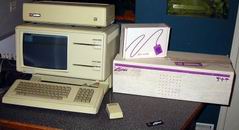
Apple Lisa
1 with two 5.25-inch "twiggy" disk drives and
original boxes.
05/25/2002 - Very rare
Apple Lisa for sale on eBay
This
computer is the second most rare Apple ever made, the Apple
I being the first. It is rare because Apple made
available a free upgrade kit, consisting of a single
3.5-inch 400KB disk drive and upgraded ROMs. In exchange,
Apple took the front face plate and the two disk drives. So
far, the current bid is $3050.00, however it is still below
the reserved price, which I'm predicting is at least
$5000.00. I wouldn't be surprised if this sold for $10,000,
but it'll probably sell for $5000 to $7000. |
|
UPDATED
06/01/2002 - Holy smokes! This thing actually
sold for $10,000! That price ended up being the
reserved price. Amazing! However, like I said earlier, I
wouldn't be surprised, and I'm not a bit surprised now that
the bid is over. What's ironic is that the person who ended
up winning didn't bid on it the entire time until the very
end. So that user definitely had a plan on winning the unit
from the get go! My personal congratulations go out to slewis1962
for winning! This is an AWESOME piece of Apple
history!
I'm
wondering now if the seller actually wanted to sell the
system in the first place? Did he expect someone to actually
offer $10K for this thing? Most people who own these kinds
of things put the machine out for bid every once in awhile
just to get a sense of its value in the real world.
UPDATED
05/30/2002 - Price is now $4999.99, with 1.5 days
remaining. However, it
still hasn't reached the reserved price. Someone may need to
re-mortgage their home to buy this thing.
UPDATED
05/28/2002 - Price is now $4150.00. However, it
still hasn't reached the reserved price.
|
|
05/19/2002 -
BASIS 108 may be arriving VERY SOON!!!!! I
may be counting my eggs before they're hatched on this one...
Oh, what the hell!!!!!
I've found
someone in Las Vegas that is willing to sell me a BASIS 108,
complete with original box. For more information on this
model, check
out this link. Here's
some information about the BASIS 108. German-made, it's one of
the few Apple II clones designed with a stand-alone keyboard
and built-in floppy disk drives. It also has a Z-80
microprocessor and 80-column video support built-in. And this
guy's HUGE and HEAVY! It's hard to find exact information on
compatibility, however from what I can remember during my
youth, this model played everything I threw at it. How
is this model linked to my life? Computer Market, a
locally-owned computer store in Honolulu (sold to MicroAge in
the late 1980's, then eventually |
|
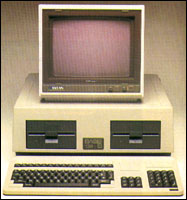
BASIS 108, a german-made Apple II
clone from the early 1980's |
|
turned into Technology Integration
Group {TIG} in the late 1990's) used to run an
Apple II-oriented bulletin board called Honolulu Networks.
Operated by SYSOP Charlie Kong, it was one of the more
friendly BBS's. And Charlie was THE guy who got me into
programming 6502 assembler and Applesoft BASIC. Well, Honolulu
Networks ran off the BASIS 108 using the BBS software Networks
II, written by Nick Naimo. In the early 1980's, my dad,
who was a close friend to owner Kris Kapur, used to
drive me all the way from Pearl City to Honolulu so I could
hang out with Charlie, and other Apple II enthusiests to learn
stuff. The BASIS 108 was the very first Apple II clone I've
ever seen (it was made before the Franklin Ace 1000, and came
out about the same time as the lower quality asian-made
clones), and it was the only Apple II-based machine Computer
Market sold (they weren't an authorized Apple dealer).
I
credit this model as being one of the huge contributors to
what I've become today (I'd like to think of it as
"good" things). Even though this is not an
Apple-labeled product, it belongs in my museum for personal
reasons because of the contributions it made in my life. |
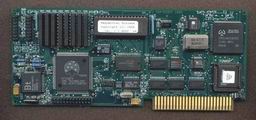
Second Sight VGA card for the Apple IIgs
|
|
05/15/2002 -
Second Sight VGA Card sold for $250+ The
rarest of ANY card for the Apple II series, this VGA card
will more likely be
sold on eBay for $250, or more if
someone increases the bid price. It's not that it's rare in
numbers... It's rare in that you NEVER see these sold
ANYWHERE (Second Sight was sold to another company
several years ago). This guy must be desparate for money
because anyone who owns this card would rarely ever part
with it. What makes it so great is that the
standard Apple RGB Monitor for the Apple IIgs does not
support resolutions beyond 640x400, where this VGA card
supports up to 1024x768. I personally was considering $200
for it, but $250 is much too steep even for this!
|
|
05/12/2002 -
Taipan game available for the Palm OS Virtually all
Apple II users have played the game
Taipan at least 100 times.
It is by far the most addicting game I've ever played. Castle
Wolfenstein (1982) was a close second in my personal
experience. Mat Bowen re-wrote the 19th century-based
trading game from scratch, and the accuracy is virtually
identical. The only thing he did not emulate is the famous
moneylender bug.
|
|
05/12/2002 -
Convert an Apple //c into an iMac Sounds
pretty screwed up, yeah? Well, someone did it! And
here's the resulting product to prove it! Unfortunately,
the web site is in Japanese, so most people can't read the
details of the project. However, the pictures there are very
detailed, and I can gather quite a bit of information from it. For
starters, he was able to get the built-in //c keyboard to
function by taking the ADB controller and the pressure
sensitive pad from an Apple Macintosh keyboard, then re-map
the //c key caps to match that of the pad. Using the ADB
controller, he was then able to use some sort of ADB-to-USB
bridge so it would work with the iMac's logic board. |
|
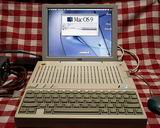
Apple iMac placed inside of an
Apple //c case |
|
Second,
he took the iMac's power-on LED and re-map it to the //c's
built-in power-on LED. If you look very closely at the photos,
the LED is now blue instead of the original green color. Third,
he used the 5.25" internal disk drive area of the //c to
place the iMac's CD-ROM drive. He was able to do this by
modifying the front panel plate. Forth,
he created his own VGA port so you can connect a PC display to
it. In the photos, he's using a somewhat small VGA monitor,
which gives it a really nice touch! Finally,
he took the original backplane, plugged up the remaining
unused holes, and re-seated it so the VGA video port, power
port, and even a USB port, can be used. This
by far is the MOST AWESOME hack I have ever seen in quite some time!!!! |
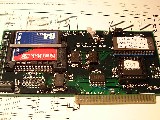 Apple
II CompactFlash/IDE controller combo card (circa 2002) |
|
04/29/2002 -
NEW Apple II-based CompactFlash/IDE combination card has
been developed This is quite an amazing
achievement seeing
production of new Apple II-based hardware is anything but
profitable. The card is ProDOS and GS/OS compatible, and can
host up to four 32MB partitions. Cost is $100.00 plus
shipping/handling. Orders can be placed by going
to the web site. This is a
fine example of the hardware part of using computers.
Designing your own peripherals or tweaking existing hardware
were quite popular throughout the 1970's and early 1980's. I
miss this period! The reason why Apple IIs have lived so
long is that it's still one of the more simple platforms for
people who want to experiment with electronics. |
|
04/28/2002 - New Aquisitions for the Apple
Museum-for-a-Day Focusing more on the Apple ///
computer these past few weeks, I've obtained several new items
for the museum. One such item is an Apple /// Plus upgrade
kit, which includes a never-been-used keyboard and a ROM
upgrade. I'll hang onto the kit for now, deciding whether or
not I should even use the kit. I'd like to keep the /// as a
plain old /// for now.
Also
received are three Apple /// manuals, all related to the
Microsoft SoftCard for the Apple ///. The manuals include the
Microsoft BASIC Reference Manual (not to be confused with
Applesoft BASIC that Microsoft also licensed to Apple), CP/M
Reference Manual, and SoftCard Installation and Reference
Manual.
|
|
04/21/2002 - Apple I is sold for $14,000 I'm in
disbelief! I'm very shocked that the Apple I auctioned off at
the Vintage Computer Festival sold for only $14k. And this
system was a FULL WORKING board, too! In the past,
other Apple I models sold for as much as $50,000. The board
was fully re-furbished earlier last week to working condition.
Auction Ended 4/21/2002 at 2:00pm HST
APPLE I BIDDING WINNING PRICE: $14,000.00
|
|
04/18/2002 - Apple I is being auctioned off this weekend
According to Lycos and CNN, the very rare Apple I computer is
being auctioned off by the Vintage Computer Festival. For you appliance operators, you
wouldn't believe how rare this computer is. Only 200 were
made in 1976, and only 50 are believed to exist today. Steve
Wozniak designed the motherboard and modules himself while
he was employed at Hewlett-Packard. Woz and Steve Jobs
(Jobs' pre-yelling at employees phase) put the parts
together in Job' parent's garage, then sold 50 to a computer
store and the other 150 to members of the Homebrew Computer
Club. The Apple I is credited for starting the microcomputer
revolution in the late 1970's. If you don't have the money
to buy one, you can go to Washington D.C. and view one at
the Smithsonian Institute. |
|

Apple I, not
including the keyboard, monitor, cassette player. The
breadboard area on the top of the motherboard is used for
developing experiments. (circa 1976) |

Apple
/// with ProFile, Disk II, and color monitor (circa 1983) |
|
04/06/2002 -
Bryan Purchases an Apple /// System This purchase is awesome! I've never owned or even TOUCHED
an Apple /// computer. I don't know anyone in Hawaii who
owned one. I've asked around at club meetings and even in
the classifieds many many times for years! Every time I
displayed my Apple Museum to the public, I have at least
five people asking me, "Where's the Apple ///?" Do
you know how difficult it is finding such a unit in Hawaii?
This is the one item that would make the museum legit and
that much more complete! Well, I found this gorgeous unit on
eBay and I just had to get it! I purchased it literally
minutes ago before writing this very article. Here's the
specifications: Apple /// with 256KB RAM (it's not the
"Plus" version), 5 MB ProFile hard disk drive with
controller and printer interface card. It'll be shipped with
On /// and other utilities. The color monitor you see
in the picture won't be part of the package. Instead, I'm
replacing it with a Monitor /// so it'll be even more
authentic. You would not believe how STOAKED I am about
this! Even more exciting than Noriko Sakai!!!! Well, let me
think about that for awhile... |
| 03/31/2002 -
Bryan FINALLY gets his claws on an Apple IIe-to-IIgs Upgrade
One of the biggest regrets of my geek life is selling my
Apple IIe-upgraded Apple IIgs in 1991. I just got out of
college less than a year earlier, and those student loan
payments can put a dent into your budget. I sold the
machine, and a ton of other IIgs items for about $100. I
estimate what I got rid of under today's prices is valued at
over $1000. I won the very machine you see to your right on
eBay. Not bad - $200 and some change. When I receive the
unit, I have a BRAND NEW never opened Apple IIe shell
waiting for it. When I'm through restoring this machine,
it'll look as if it came off the factory belt because the
shell is JUST THAT! I also have the original Woz Limited
Edition certificate and letter that came with my original
upgraded machine, so I expect the value of my baby to
increase to over $1000. After over 10 years, I finally come
to peace with myself. |
|

Apple
IIgs Upgrade thrown in an Apple IIe case (circa 1986) |
 |
|
03/27/2002 -
Bryan posts pictures of his copy of NORIKO BOX.
This is probably the first web page to display the
newly-released NORIKO BOX on U.S. soil. I'm hoping to
take clearer scans as soon as I can find someone with a
good quality scanner. I don't have the money for one
right now... I'm planning on blowing some $$$$ into the
Apple IIgs Upgrade being sold on eBay. I'm expecting the
price to hit around $500.00 when I finally win it. Click
on this link for the photo album, courtesy of Apple
Computer's iTools Home Page feature. |
| 03/23/2002 -
From the "One person's trash is another person's
treasure" Dept. WIRED Magazine ran an article
about a guy who sold a mint condition box that used to contain a
Macintosh 128. The box ended up being sold on eBay for $536.00.
Keep in mind, boys & girls, that the box DOES NOT
contain the computer. Just the box itself, and some original
foam. This is one of many examples that support my idea that
there are two types of people out there in technology-land:
appliance operators and collectors. Appliance operators would
say, "What? Are you NUTS?????". The collector would
say, "If I only bid $700 I could have won it!!!!"
Places like LowEndMac
and EveryMac are frigging appliance
operators. These guys rate the value of a Macintosh 128 at $0.00.
Remember, if you want to know what your legacy computer is worth,
don't go to a blue book; go to eBay and find out. |
|
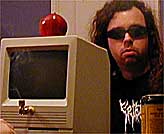
Woah,
dude! Faaaar out!!!! I'm soooo totally wasted!!!! |
|
Also, check out Goshu
Trading, a store in Akihabara, Japan the size of my living
room where this guy has legacy Macintosh systems stacked up to
the roof. Thank God Hawaii doesn't have a store like that because
I'd be renting a U-Haul right about now.
And get this...
There's a correlation between Macintosh computers and marijuana!
I'm not kidding! According to a couple of former technical
writers who covered the development of the Macintosh back in
1984, the engineers and programmers at Apple used to smoke weed
during work. Jef Raskin, a member of the Macintosh development
team at Apple, denies the rumors. I truly believe they were pot
heads because even Steve Jobs was a part-time junkie. To keep the
relationship between Macs and the plant growing (pardon the pun),
two guys in Austin, Texas actually made
a bong out of a Macintosh SE/30. I mean, you have to do
SOMETHING while waiting eons for the Mac to boot. Let's see
Microsoft top that! :) |

|
|
03/22/2002 -
Bryan Receives Newest Noriko Sakai Release I
got it! I got it!!! Noriko
Box has finally landed at my front door!!!! I'm such
a happy camper!!!! The package came out to $105.00 (13650
yen) and $30.00 shipping to the U.S. I'm going to snap some
photos/scans of the package this weekend, so check back!!!!
Noriko Sakai boxed set
consisting of 5 CDs and 1 DVD. Includes tracks 1 & 2
from all her 34 singles (save one which only contains 1
track). All 67 tracks included have been digitally
remastered. Disc 5 contains "Noripi Ondo," and
"Noripi Kouza - Bon-odori-hen" which were released
on cassette tape under the pseudonym Noripi, and "Urepi
- Tanopi - Menkorapi - NORI Ping" which was previously
released on CD book only. The DVD contains a sci-fi short
movie, "Alien Hunter P" which was previously only
available on VHS, and plenty of rare footages! Comes with a
deluxe booklet with lyrics, discography, rare photos, and
more. These pictured discs are housed in a special
six-folded sleeve.
|
|
03/11/2002 - Bryan Expands his Noriko Sakai Collection Late
last week was Christmas Day for me. I received literally 14 pounds of Nori-P stuff via snail mail. And I paid a great price for the
package ($56 was just for shipping from Japan, but it was worth it). With
the latest batch, I'm missing only five of her CD
singles, and four of her picture
books. Disgusting or not, I have EVERY ONE of her
full-length CDs
. One of these days, I'd like to open my own shrine to
celebrate the most beautiful woman on Earth, both inside and
outside. However, my old Saimin buddy Animate has a
great site of his own he shares with the Internet world
, so the pressure is not on me to release such a site. I recommend you visit his site!
So why am I so
ga-ga over Noriko? To start off, I was brought up in Pearl
City, Hawaii, where a majority of the population in this city
was Japanese.
And most of the girls there were cute! Ever since 8th grade when I had my first crush on a 9th grade
Japanese girl from Farrington High School, I slowly learned that
Japanese females, in comparison to other races, are somewhat
mysterious to me - in a good way of course. They present
themselves very pure, clean, and very well mannered. I don't
limit myself to just Japanese women... But even in a huge crowd,
such as karaoke bars, shopping malls, etc., they always grab my
attention! :)
So falling in
love with Noriko wasn't that difficult. My first run-in with
Noriko was about six years ago, through an article I read on the
Internet about Japanese popular music (JPOP). At that time, I was
a big fan of Seiko
Matsuda, who was known as the Madonna of
Japan. It was because of my research for Seiko information
that accidentally led me to Noriko. Because Seiko is much older
than Noriko (I think 10 years older), Seiko was already past her
prime by her mid-20's when Noriko was becoming an up-and-coming
actress and singer. By 1990, fans considered Noriko the
replacement for Seiko as the princess of JPOP music. I didn't
loose interest in Seiko. But there's something VERY special about
Noriko! :)
When I first
discovered Noriko, she was just overcoming her
teeny-bopper/kawaii
image, becoming a beautiful and talented
adult. When I saw a photo of her, the first thing that grabbed me
were her eyes. She has the prettiest eyes I have ever seen... BOOM! I was
totally attracted to her!!!! The rest, as in the old saying, is history!
My first CD of
hers was 10 Songs, which includes a beautiful ballad on
track 10 called Anata Dake. When you hear her sing (even
though I can't understand a single word of Japanese, but I'm
learning), you can
tell that what she sings is what she's really feeling. And this
song just hit me like a ton of bricks! I wanted more!!! So I then
bought her Twin Best 2-CD set, then followed them up with
a series of her other earlier stuff. The CDs after 10 Songs take
some getting used to.
My favorite
songs of hers include Anata Dake, Hohoemi Wo Mitsuketa, Ureshi Namida,
Aoi Usagi and Love
Letter. My favorite CD is
Sweet'n Bitter, and my favorite DVD of hers has to be her concert
in Taiwan. As a side note, Aoi Usagi was voted by a major Japan
music poll as the 18th most influential song of the 20th Century.
Before you start
drooling over her... She's happily married, gave birth to a
little girl in 1999, and is living a very private life, much
lower key than before. It's amazing that even though Noriko has
been in show business since she was 14, there's very little we
know about her. No big deal was made about her kid like the
westerners did to Madonna and Lourdes. I give total credit to the Japanese media, where
it is well known that they respect the privacy and image of
celebrities in Japan. The Paparazzi should learn from the
Japanese.
|
 |
|
01/20/2002 - What's Bryan reading these days? (And who's that
cute-cute-cute-cute Japanese girl on this page?)
Her name is Yoshizuki Iori, and she's one of several characters
in the Japanese anime manga tankabon, I's. It's a teenage
story by Katsura Masakazu about a normal Japanese kid,
Ichitaka Seto, who seeks the love and companionship of the
cutest girl in school, Iori. Sadly enough (reminds me of
myself), Ichitaka is too afraid to ask Iori out
straightforwardly, so he gets the help from his friend
Teratani who, despite his dorky looks, is actually very
smooth when it comes to girls. I love Japanese love stories
(known in Japan as "shounen romance")... There's
nothing like it in western literature. I started getting
hooked on Katsura-san's work when I read his other work, Video
Girl Ai, which is also out on DVD video. And how did I
run into VGA? Sakai
Noriko sings the theme song, Ureshi
Namida (Happy Tears), for the program, of course! :)
|
|
|
|
|
Copyright
© 1997-2010 Pearl City Networks. All Rights
Reserved.
|
| |

![]()
![]()
![]()
![]()
![]()
![]()
![]()
![]()
![]()
![]()
















